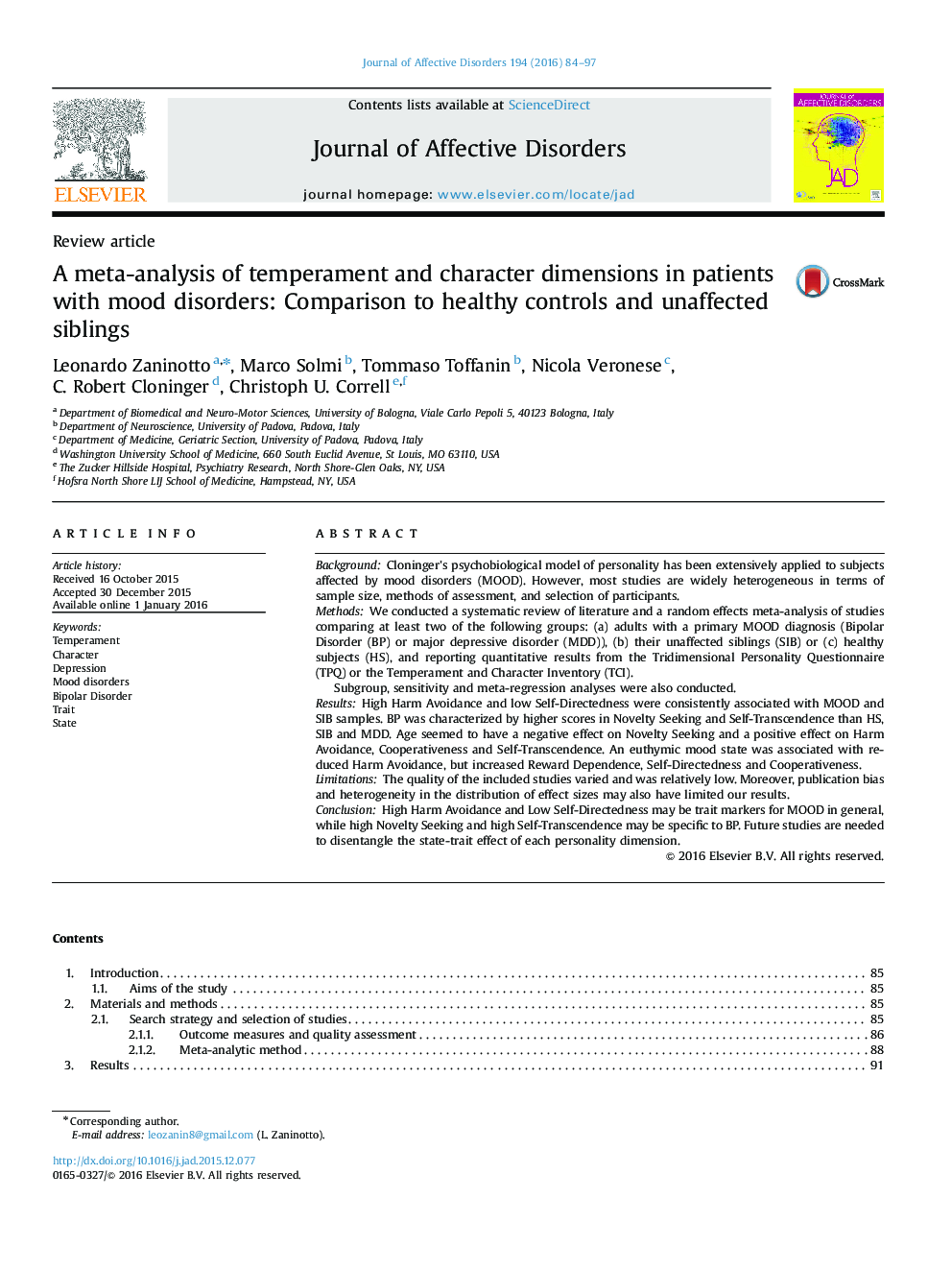| کد مقاله | کد نشریه | سال انتشار | مقاله انگلیسی | نسخه تمام متن |
|---|---|---|---|---|
| 4185859 | 1608131 | 2016 | 14 صفحه PDF | دانلود رایگان |
• Cloninger's model of personality has yielded contradictory results in MOOD.
• A high HA and a low SD appear to be characteristics of MOOD and SIB.
• BP seem to be characterized by higher NS and ST than HS, SIB and MDD.
BackgroundCloninger's psychobiological model of personality has been extensively applied to subjects affected by mood disorders (MOOD). However, most studies are widely heterogeneous in terms of sample size, methods of assessment, and selection of participants.MethodsWe conducted a systematic review of literature and a random effects meta-analysis of studies comparing at least two of the following groups: (a) adults with a primary MOOD diagnosis (Bipolar Disorder (BP) or major depressive disorder (MDD)), (b) their unaffected siblings (SIB) or (c) healthy subjects (HS), and reporting quantitative results from the Tridimensional Personality Questionnaire (TPQ) or the Temperament and Character Inventory (TCI).Subgroup, sensitivity and meta-regression analyses were also conducted.ResultsHigh Harm Avoidance and low Self-Directedness were consistently associated with MOOD and SIB samples. BP was characterized by higher scores in Novelty Seeking and Self-Transcendence than HS, SIB and MDD. Age seemed to have a negative effect on Novelty Seeking and a positive effect on Harm Avoidance, Cooperativeness and Self-Transcendence. An euthymic mood state was associated with reduced Harm Avoidance, but increased Reward Dependence, Self-Directedness and Cooperativeness.LimitationsThe quality of the included studies varied and was relatively low. Moreover, publication bias and heterogeneity in the distribution of effect sizes may also have limited our results.ConclusionHigh Harm Avoidance and Low Self-Directedness may be trait markers for MOOD in general, while high Novelty Seeking and high Self-Transcendence may be specific to BP. Future studies are needed to disentangle the state-trait effect of each personality dimension.
Journal: Journal of Affective Disorders - Volume 194, April 2016, Pages 84–97
